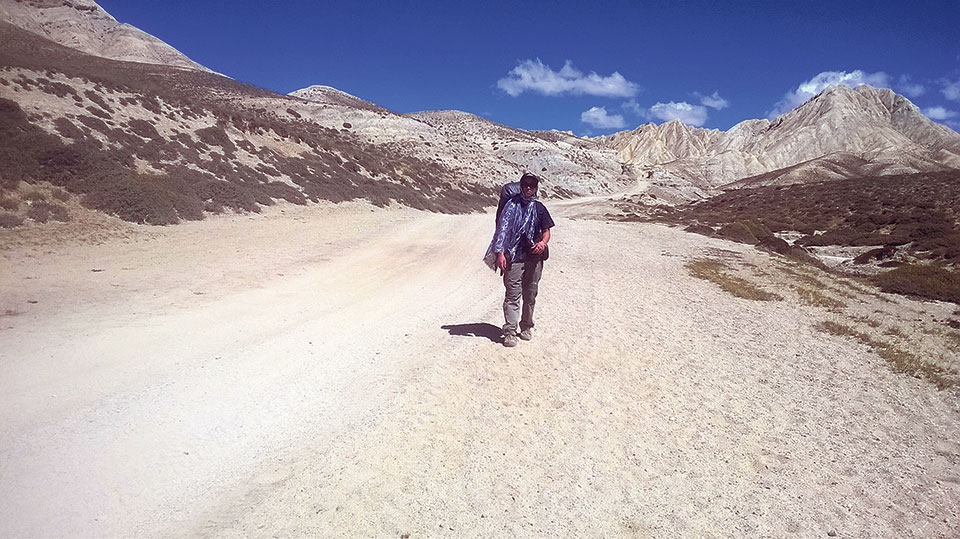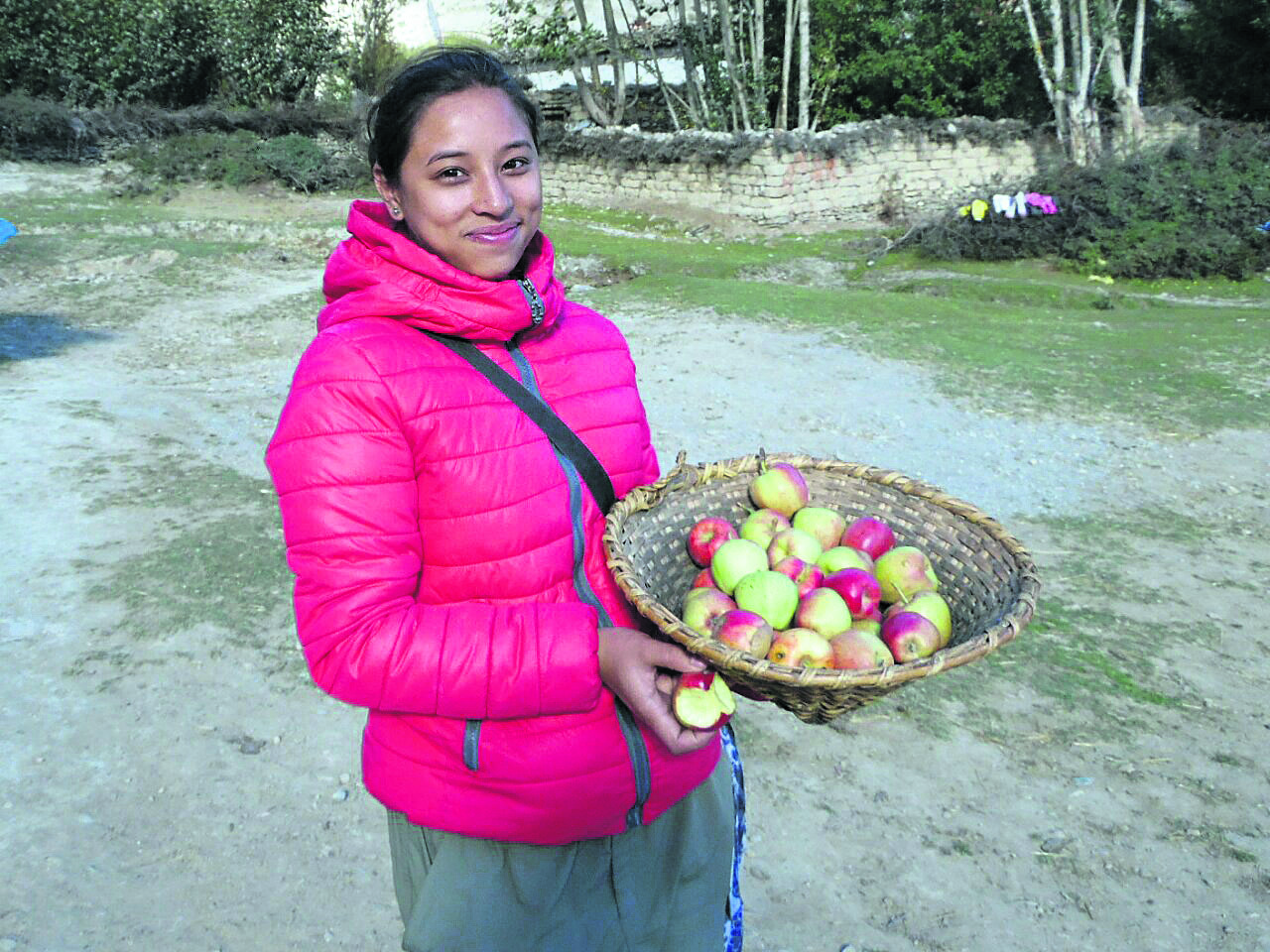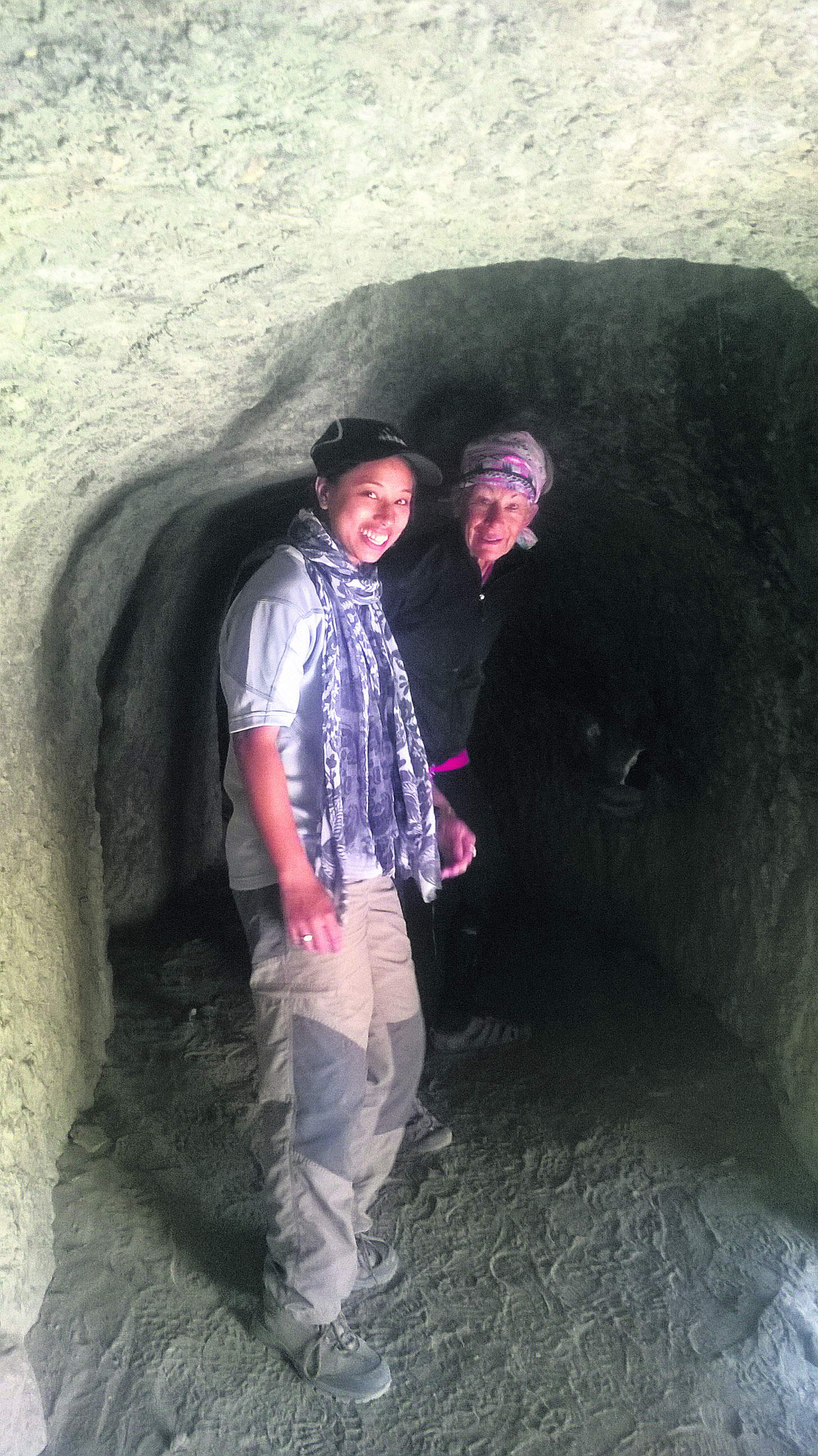
For weary travelers, amid the ashy, arid trans-Himalayan desert of Upper Mustang, the villages act as green beacons. I hadn’t expected the climb from Kagbeni to be beautiful. The three white peaks of Nilgiri Mountain towered over us and the ochre canyons in the distance throughout, as we started our march to the once-forbidden city of Lo Manthang.
Walking from Kagbeni, I was already trailing behind the group, and it was only my first day leaving the lower ridges of Mustang. The trail was ankle-twisting, my backpack had started to give in to the pull of gravity and my gastritis was ringing alarms on my empty stomach. In front, Bijay Dai waited for me at every turn with his own load while the others, including two elderly French couples, significantly outpaced me. Although a bit embarrassed, I was at least glad that I had prepared as much as I did.
Before embarking on what would be my first trek, and a solo one at that, to the isolated region of Upper Mustang, I was getting my body ready for the grueling test. I was going on morning walks every day, and even convinced my dad to hike from Changunarayan to Nagarkot, on the western side of the Kathmandu Valley, to get myself accustomed to the demanding days ahead.
Although my trek to Chukksang wasn’t the worst of starts, I was already spent, and we still had to walk a couple of hours to Chele. My legs already wanted to put down roots in the village, but I didn’t want to get separated from the group either. What if I didn’t find anyone else trekking this restricted route again? What if other people weren’t this friendly? After a fair bit of consideration, I decided not to push myself too hard and to rest up in Chukksang. Bijay Dai and the group would continue ahead without me.
I decided to explore Chukksang and visited a nearby monastery. I had half-expected a lot of open spaces surrounded by small buildings, like most other monasteries. But what I was staring at was just a large hole on a hillside. The monastery, Mentsi Lhakang, was carved on the side of a cliff. The entrance led to a stack of stone steps that gave way to a door overhead, which led to a small praying room. It wasn’t much different from how people would access their top floor kitchens in old Bhaktapur houses.
Over the next days, we passed villages of Ghemi and Charang on our way towards the medieval walled capital of Mustang, Lo Manthang. We made our way through increasingly sparser lands, fiercer winds, more isolated chortens (stupas) and silent gompas. The farther we traveled the more the houses resembled their medieval selves of stone and mud and the thinner become the stacks of logs ever present on Mustangi roofs. The resources were scarcer here, and you saw it all around.
To be honest, I was glad I found companions throughout my trip--the trekking group to Lo Manthang and the students from Rampur Campus, Chitwan, to Muktinath. Even though I was prepared to go at it alone, I always hoped I wouldn’t have to. But the thing with traveling alone, I’ve learned, is you’re only as alone as you want to be.
After five hours of walking and the umpteenth turn without any trace of civilization, the 20-feet-high walls of fortressed Lo Manthang came into view from the Lo-Pass that is situated at the height of 3,950 meters. The city’s ochre and dun-colored structures form an expansive settlement in what is basically a section of the Tibetan plateau. Lo Mathang was what I had imagined Jomsom would look like, in many ways a picture of a medieval Tibet in the modern day.
The next day, we headed out to Chhosar, the last village of Mustang and the location of the famous caves of the region, on the back of ponies, although I had wished we would be on horsebacks. The ancient cave dwellings of Shija Jong, one of the thousands in the area, are dug out on an ochre hill and stacked one on top of another. Even though Lo Manthang has opened its door to outsiders, after centuries of isolation, the city still feels detached from the rest of the world and no less mysterious--which even the Indian SUVs and Chinese motorbikes plying through its recently built roads and satellite dishes on rooftops have failed to change.
My last full day in Lo Manthang was also the day of my birthday. It felt weird being away from friends and family on the day, and weirder still to not be wished in person. Some of my friends had already called to wish me happy birthday, and I had called the rest to let them know it what day it was. But I was embarrassed to make a big deal about something so trivial to people I had barely known for a few days. When I opened up, I was greeted warmly and with an even warmer mug of Mustang coffee, which as it turned out, wasn’t actually coffee but a boiled concoction of local alcohol, and quite a few “Why didn't you tell us earlier?” remarks. As I sat at the table, with my untouched cup of ‘coffee’, surrounded by the laughter of newfound friends, I knew I had made the right decision to stay strong and take this trip. These were the moments I would remember for the rest of my life.





Leave A Comment